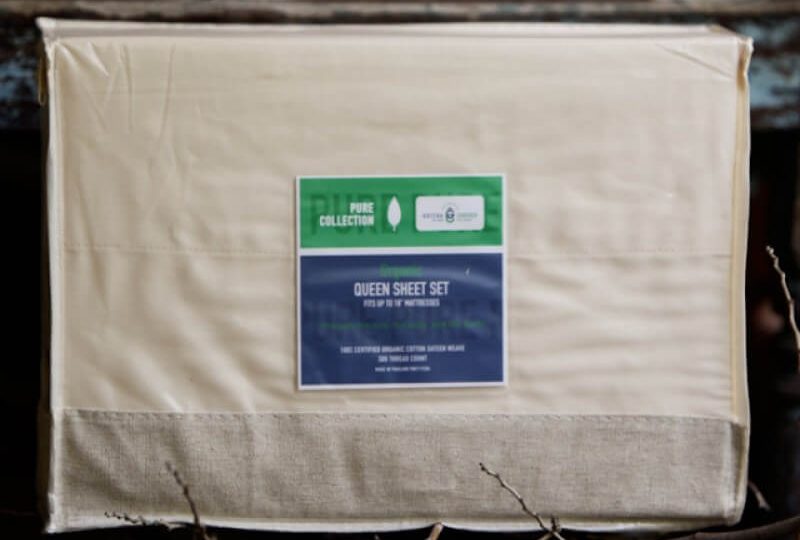Every purchase made online is encrypted with a high level of security you’ve come to expect. Your private information is never shared nor sold, so you can buy with confidence. You can also visit our store if you are in the St. Louis area.

Table of Contents
When it comes to buying bed sheets it isn’t just about thread count.
While high thread counts can be an important part of better sheets, it’s the thread itself that makes the difference between sheets that stand up better to the washing machine and those that don’t. In fact, better-quality fiber sheets with lower thread counts feel softer than lower quality fiber sheets with a higher thread count. This is why it’s important to know what you pay for when buying bed sheets.
One of the most important things to consider when buying bed sheets is fiber.
Cotton-polyester blend sheets are durable, wrinkle-resistant and affordable. Polyester lasts longer than cotton and is up to half the cost of all-cotton sheets. But nothing compares to the cool, soft feel of 100 percent cotton sheets. Cotton fiber wicks moisture away from your skin so you’ll rarely wake up clammy. Less likely to stain than cotton-polyester blends, cotton is a water loving fiber that easily releases dirt when wet. When shopping for 100% cotton sheets, look for “Egyptian long-staple,” “pima,” or “Supima” high-quality long fiber sheet sets. Long-staple cotton sheets are softer and the material won’t pill or produce lint like those that are made with shorter fibers.
It’s also important to consider weave when purchasing bed sheets.
A sheet’s weave affects how it feels, looks, how long it lasts and its price. Least expensive are basic plain weave sheets that are woven from an equal number of vertical and horizontal yarns. An upscale weave is percale. Percale weaves have 180 or higher thread counts, have a crisp feel and are known for their longevity. Even softer and more expensive than percale woven sheets are sateen sheets.
Sateen sheets have a higher proportion of vertical threads resulting in an extremely soft fabric. However, sateen sheets are more apt to pill and tear than sheets with a plain weave. Other sheets like jacquards and damask sheets are more textured with intricate weaves whose patterns vary from satiny soft to coarser and nubby. Jacquard and damask sheets are just as durable as plain weave sheets but more expensive because they are made on special looms.
Finish is something else to consider.
Since OSHA currently has rules that limit employees of sheet manufacturers, buyers of sheets should raise an eyebrow of concern. Things to beware of: To prevent sheets from shrinking, losing their shape and wrinkling, most sheets are treated with chemicals like chlorine, formaldehyde and silicon. And to produce sheen some sheets are treated with alkalis. But if you’re leery of chemicals, a handful of manufacturers produce pure-finish sheets or organic sheets. With pure-finished organic sheets the manufacturer hasn’t used chemicals at all or has removed all traces of chemicals used during manufacturing. While pure-finish sheets aren’t wrinkle-free, they’re ideal for allergy sufferers or folks with chemical sensitivities. Another option is organic sheets which are made from cotton grown without the use of pesticides and the sheets are also untreated with chemicals. Although organic sheets are more expensive they come in a variety of colors.
Consider the usage of dyes and colorings
Many of the chemicals used are considered toxic and controversial at the least. While a bed sheet set may be the perfect complementary color against your duvet cover, certain patterns and colors are applied to sheets after they’re woven, making them feel stiff until they’ve been washed several times. This is another reason why jacquard weaves and other colored and patterned sheets are softer and often more expensive. Made from yarn-dyed fabrics or woven from colored yarns, jacquard woven sheets and other high-end bed sheet sets are naturally softer and don’t require as many washing machine cycles.
Before you purchase your next set of bed sheets consider, fiber, thread-count, weave, finish and dye. Lastly consider your health and the health of your family and the possibility of limiting exposure to chemicals that may be harmful. Using these criteria you’ll make a smarter purchase and enjoy your sheets for years to come.
